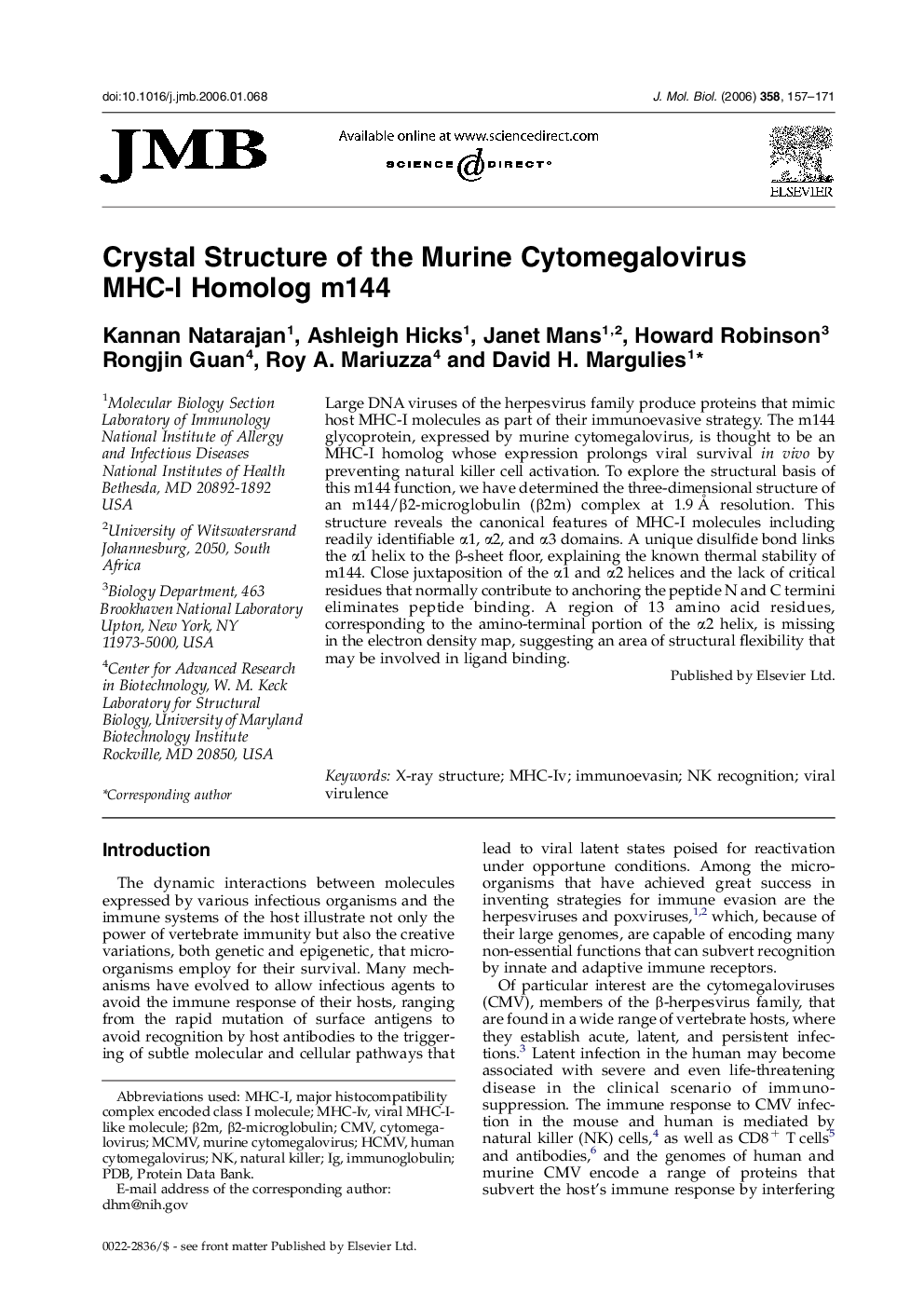| Article ID | Journal | Published Year | Pages | File Type |
|---|---|---|---|---|
| 2189796 | Journal of Molecular Biology | 2006 | 15 Pages |
Large DNA viruses of the herpesvirus family produce proteins that mimic host MHC-I molecules as part of their immunoevasive strategy. The m144 glycoprotein, expressed by murine cytomegalovirus, is thought to be an MHC-I homolog whose expression prolongs viral survival in vivo by preventing natural killer cell activation. To explore the structural basis of this m144 function, we have determined the three-dimensional structure of an m144/β2-microglobulin (β2m) complex at 1.9 Å resolution. This structure reveals the canonical features of MHC-I molecules including readily identifiable α1, α2, and α3 domains. A unique disulfide bond links the α1 helix to the β-sheet floor, explaining the known thermal stability of m144. Close juxtaposition of the α1 and α2 helices and the lack of critical residues that normally contribute to anchoring the peptide N and C termini eliminates peptide binding. A region of 13 amino acid residues, corresponding to the amino-terminal portion of the α2 helix, is missing in the electron density map, suggesting an area of structural flexibility that may be involved in ligand binding.
